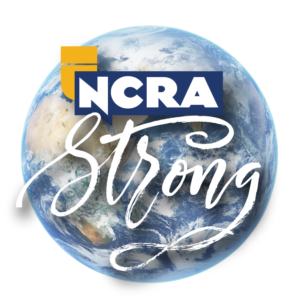Article I: Name. The name of the organization?
Article I: The name of this organization shall be National Court Reporters Association (the “Association”).
Article II: Purposes. There are 13 purposes of this Association. Can you name at least one?
Article II: Definition: in the context of this document, stenographic verbatim reporting refers to that reporting technology by the use of symbols, manually or by stenographic machine.
The purposes of this Association shall be:
1. To assume responsibility for leadership and enlightenment of verbatim stenographic reporters and of the public regarding the special competency, importance, and value of verbatim stenographic reporters, and to promote verbatim stenographic reporting technologies by the use of symbols, manually or by stenographic machine, over alternative reporting methods.
2. To promote a broader understanding and acceptance of the verbatim stenographic reporter as an integral part of the judicial process.
3. To apply the knowledge and experience of verbatim stenographic reporters, working in cooperation with the bench and bar, toward the upgrading and improvement of the criminal and civil justice system, in order that the public good may best be served, and to promote a broader understanding within the profession of the responsibility of a verbatim stenographic reporter to participate actively in the achievement of this objective.
4. To encourage, establish, and maintain high standards of professional education, competence, and performance of verbatim stenographic reporters.
5. To conduct and promote lawful and proper technical and business research to enhance the services of verbatim stenographic reporters.
6. To promote lawful and proper professional ethics, as well as compliance with all applicable laws, including antitrust laws, for verbatim stenographic reporters.
7. To stimulate and encourage the establishment and maintenance of appropriate training and educational facilities and programs for persons interested in the profession of verbatim stenographic reporting, and to promote verbatim stenographic reporting as a successful career.
8. To cooperate with federal, state, and local governments, their agencies, and other organized groups for the benefit of the public and the verbatim stenographic reporting profession.
9. To conduct educational seminars and conferences relating to verbatim stenographic reporting.
10. To further the exchange of professional knowledge and to disseminate, by all appropriate means, to the extent permitted by law, accurate knowledge and information with respect to the verbatim stenographic reporting profession.
11. To advance the interests and general welfare of the verbatim stenographic reporting profession.
12. To promote and encourage development of realtime reporting skills and ethics to provide communication access pursuant to the Americans with Disabilities Act.
13. To do any and all things that are lawful and appropriate in the furtherance of these purposes.
Article III: Membership. This Article describes the various classes of membership and privileges of membership. Can you name the six classes of membership?
Article III: Section 2 – Classes of Members
The Membership shall consist of six classes:
a) Participating Members
b) Registered Members
c) Student Members
d) Honorary Members
as e) Associate Members
f) Retired Lifetime Members
Article IV: Dues. Who approves the membership dues?
Article IV: Section 1 – Annual Dues
a) The annual dues for each class of Membership shall be payable in United States funds and shall be set by the Board of Directors. Any increase in the annual dues for any class of membership from that of the previous year shall be recommended by the Board of Directors and shall be approved by the Voting Members at the annual business meeting (as defi ned herein). The Executive Director shall give notice of such recommendation to all Members in the official
publication or by written notice, as the Board of Directors may determine, not less than thirty (30) days preceding the date of such annual business meeting. The annual dues of Associate Members shall not exceed sixty percent (60%) of
the dues of Participating or Registered Members. The annual dues of Student Members shall not exceed fi fty percent (50%) of the dues of Participating or Registered Members.
b) The annual dues for Participating, Registered, Student, and Associate Members are due and payable by January 1 of each year.
c) For Members who are non-residents of the United States, the annual dues shall not be more than fifty percent (50%) of the dues otherwise applicable to the respective classes of Membership (except for Associate Members and
Student Members).
Article V: Board of Directors. This Article describes the composition and eligibility of the Board, the duration of office, voting, vacancies, and removal. Can a director who has served a full 3-year term be eligible for reelection? If so, when?
Article V: Section 3–Duration of Office
a) The nine (9) members elected as Directors shall serve for a term of three (3) years or until their successors have been elected. The term of the Directors shall begin at the close of the annual convention at which they were elected.
b) The nine (9) Directors shall be divided into three (3) classes of three (3) Directors each, determined by the expiration of their terms of offi ce, one (1) class of Directors to be elected each year.
c) No Director who has served a full three-year term shall be eligible for reelection as a Director until at least one (1) year shall have elapsed.
d) A member of the Board of Directors may resign upon presenting a written resignation to the President, and the resignation shall become effective upon acceptance by the Board of Directors.
Article VI: Officers. This Article describes the titles of the offi cers, election, qualifications, term(s) of office, and removal. Who are the current officers of the Association and what elected position do they hold? Which officer may serve more than one full term?
Article VI: Section 1–Titles
The Officers of the Association shall be a President, a President-Elect, a Vice President, a Secretary-Treasurer, the Immediate Past President, and an Assistant Secretary-Treasurer (as defined in Section 8 herein).
Section 2–Election, Qualifications, and Term of Office
The Officers (except the President, the Immediate Past President, and the Assistant Secretary-Treasurer) shall be elected each year by the Voting Members. The term of each elected Offi cer shall begin at the close of the annual convention at which the Officer was elected and the Officer shall serve until the Officer’s successor is elected. No elected Officer shall serve for more than one full term in the same office except the Secretary-Treasurer, who may serve for no more than three (3) consecutive terms. The President-Elect shall automatically succeed to the office of President at the completion of the President’s term of office.
Section 8–Assistant Secretary-Treasurer
The Assistant Secretary-Treasurer (who shall be the Executive Director of the Association) shall act in the absence of the Secretary-Treasurer, and shall perform such duties as may be assigned by the Secretary-Treasurer, or the President, or the Board of Directors.
Article VII: Executive Committee. What authority is specifically taken away from the Executive Committee?
Article VII: Section 1–General
The Executive Committee shall consist of the President, President-Elect, Vice President, Secretary-Treasurer, and Immediate Past President. The Executive Director (or designee from the professional staff) shall serve as a nonvoting, ex officio member of the Executive Committee. The Executive Committee shall have and may exercise all the authority and powers of the Board of Directors during the interim periods between meetings of the Board of Directors. The Executive Committee shall inform the Board of Directors of any actions taken by the Executive Committee during such interim periods. In no event shall the Executive Committee have the authority to modify or rescind any action taken
by the Board of Directors.
Article VIII: Nomination and Election of Officers and Directors. How does a candidate get on the ballot?
Article VIII:
Section 2–Duties of Nominating Committee
The Nominating Committee shall meet at least ninety (90) days prior to the next annual convention of the Association and shall nominate one or more nominees for offices to be filled and report the committee’s nominations to the President and the Executive Director.
Section 3–Preparation of the Slate of Nominees
a) The Executive Director shall inform the Members of the slate of nominees for offices to be filled as presented by the Nominating Committee, together with pertinent biographical information for each nominee, at least sixty (60) days
prior to the annual convention.
b) In the event a nominee becomes unable or unwilling to serve, the Nominating Committee shall select an alternate candidate and transmit to the Membership its amended report as soon as feasible, but in no case later than a time
immediately prior to the annual business meeting. Members of the Nominating Committee may participate in any meeting by conference call or mail and such participation shall constitute presence in person at such meeting.
c) Any one hundred (100) Voting Members, no more than twenty-five (25) of whom are located in any one state, shall have the privilege of nominating a candidate for each of the offices to be filled by preparing and forwarding
to the Executive Director a written nomination received within 60 days after publication of the Nominating Committee slate, together with pertinent biographical information and a signed letter from each nominee confirming
their willingness to serve. Director nominations submitted under this provision shall specify which of the nominees proposed by the Nominating Committee is being opposed. Candidates nominated by petition who were not previously
considered by the Nominating Committee shall be required to complete the same application materials required of candidates who were considered by the Nominating Committee.
d) Following the closing of nominations, and in the event of a contested election, a ballot shall be prepared listing the names, by lot, of all nominees under the office for which they have been nominated both by the Nominating
Committee and by written petition of the Voting Members. The ballot shall be posted in the registration area at the annual convention meeting site.
e) No individual shall be a candidate for more than one (1) office.
f) In the event an office shall become vacant during the course of the annual convention and following the close of nominations, or in the event a nominee under subparagraph b) above becomes unable or unwilling to serve, the presiding
Officer shall entertain nominations for that office from the floor, and theVoting Members shall elect a candidate to fill said vacancy.
Article IX: Meeting and Voting. Who has a right to vote at the Annual Business Meeting?
Article IX: Section 3–Voting
a) Only Voting Members as defined in Article III shall have the right to vote.
b) Voting by proxy shall not be permitted.
c) All voting shall be conducted at the annual business meeting except that voting for contested elections (as provided in Article VIII, Section 4) and amendments to the Constitution and Bylaws (as provided in Article XVIII, Section 2) shall also include voting by electronic mail or other means of electronic transmission as shall be authorized and determined by the Board of Directors.
d) Members voting by electronic mail and other authorized means of electronic transmission for contested elections and amendments to the Constitution and Bylaws will have 12 hours to vote once the online polling process opens.
[Article III, Section 9(b) … Only Participating Members who are verbatim stenographic reporters and Registered Members who are verbatim stenographic reporters, as well as Retired Lifetime Members and Honorary Members who
have been verbatim stenographic reporters, shall be eligible to vote and/or make or second motions at such meetings or to vote by electronic mail or other means of electronic transmission as specifically authorized under Article IX
(“Voting Members”).]
Article X: Academy of Professional Reporters and Council of Academy of Professional Reporters. A candidate for Fellow includes performance in at least three areas. What are some of those areas of performance?
Article X: Section 2–Fellows
a) Election as a Fellow is a professional distinction that shall be conferred only by the Board of Directors upon a person of extraordinary qualifications and exemplary professional practice who serves as a credit to the profession of
verbatim stenographic reporting. A candidate for Fellow shall be a Registered Member with at least ten (10) years of experience and shall have attained distinction as measured by performance. Such performance shall include three
(3) or more of the following:
i) Publication of important papers, articles, books, or other written material
dealing with verbatim stenographic reporting, professional, or related subjects.
ii) Creative contributions to the welfare of the profession of verbatim stenographic
reporting.
iii) Significant and distinguished service to the profession as an active participant
on boards or committees of any association of verbatim stenographic reporters.
iv) Contributions in such areas as teaching, editing of publications, other board
or committee service, or education of the general public that have served to
enhance or promote the verbatim stenographic reporting profession.
v) Attainment of the Association’s Registered Merit Reporter, Registered Diplomate
Reporter or Speed or Realtime Contest Certificate.
Article XI: Council on Approved Student Education. What is the responsibility of the CASE?
Article XI:
Section 1–Council on Approved Student Education
There shall be a Council on Approved Student Education (“CASE”), which shall consist of at least five (5) members, including at least two (2) Registered Reporters, and at least three (3) reporting educators from NCRA-approved programs representing both public and private institutions. CASE shall be responsible for the approval and development of court reporter student training and education programs. The members of CASE shall be appointed by the President, with the approval of the Board of Directors, to serve three-year staggered terms.
Article XII: Structure. What committee is responsible for enforcing the Code of Professional Ethics?
Article XII:
Section 2–Committees, Councils and Task Forces
a) With the approval of the Board of Directors, the President may create and shall appoint members and chairs of such committees, councils and task forces as necessary, who shall serve for a term of one (1) year, unless otherwise specified.
b) Committee on Professional Ethics: There shall be a committee consisting of five (5) members, at least three (3) of whom shall be Registered Members and, when feasible, one (1) of whom shall be a Past President, appointed by the President with the approval of the Board of Directors. The members of this Committee shall be appointed to serve for staggered three-year terms. The Committee shall be responsible for developing, interpreting, and enforcing the
Code of Professional Ethics in accordance with the provisions of the Constitution and Bylaws. The Committee shall function in accordance with operating rules and procedures that are subject to approval by the Board of Directors.
c) Constitution and Bylaws Committee: This committee shall consist of a minimum of three (3) members appointed by the President with the approval of the Board. The committee shall perform the duties assigned in this Constitution and
Bylaws for amending the Constitution and Bylaws, reviewing the Constitution and Bylaws from time to time, and making recommendations to the Board of Directors and the Membership.
d) Distinguished Service Award Committee: This committee shall consist of five (5) members, who may be past recipients of the Distinguished Service Award.
Committee members shall be appointed for a term of three (3) years on a rotating basis or for the unexpired portion of a term. This committee shall submit to the Board, not later than March 1 of each year, a list of candidates for the
Award, together with all available information about the candidates, and with their recommendation for selection. The Board may accept or reject each or all of the committee’s candidates or recommendations. The Board may not independently select its own recipient for this award.
Article XIII: Executive Staff. Who selects the Executive Director as employed by the Association?
Article XIII:
Section 1–Employment of Executive Director
There shall be an Executive Director who shall be selected by the Board of Directors and employed by the Association.
Article XIV: Fiscal and Legal Procedures. How often are the financial records of the Association audited?
Article XIV:
Section 15: The Board of Directors may appoint legal counsel to act as general counsel and to advise in the legal affairs of the Association.
Section 16: The Board of Directors shall appoint an independent certified public accountant to audit the financial records of the Association and submit an annual audit report.
Article XV: Indemnification and Insurance. Who may authorize the purchase of insurance on behalf of directors, officers, employees, and volunteers?
Article XV:
Section 2–Insurance and Funding
The Board of Directors may authorize the purchase of insurance on the behalf of any of its Directors, Offi cers, employees, and volunteers, against any liability asserted against or incurred by any such person which arises out of such person’s status as a Director, Officer, employee, or volunteer or out of acts taken in such capacity, whether or not the Association would have the power to indemnify and hold harmless such Director, Offi cer, employee, or volunteer against that liability under law. Such indemnification shall be limited to the proceeds of any such insurance policy that may be purchased and an additional Association funds that may be available for such purposes.
Article XVI: Affiliated Units. What is NCSA?
Article XVI:
Section 3–Definitions
a) The term “unit” and or “units” shall be synonymous with the term “association.”
b) A “state” shall be defined as a state or territory of the United States or foreign nation which is approved for membership in the National Committee of State Associations (“NCSA”) by the Board of Directors.
c) Only one affiliated unit may be recognized from any one state, with the exception of states wherein the number of NCRA members exceeds ten percent (10%) of total NCRA membership.
Section 5–National Committee of State Associations
A National Committee of State Associations (“NCSA”) shall be convened annually. NCSA shall be composed of two (2) representatives from each affiliated unit and two (2) alternates, who shall not be entitled to represent more than
one affi liated unit as a delegate, each of whom shall be appointed by such person’s respective affi liated unit. Each affi liated unit shall have no more than two (2) votes. In addition, delegates-at-large, with a voice but no vote, may be appointed by the President to serve on NCSA, representing states that are not affiliated. The President shall appoint a chair and vice chair to conduct the business of NCSA. The Board of Directors shall establish policies and procedures for the conduct and operation of NCSA.
Article XVII: Distribution of Assets. The funds of the Association are used only to accomplish what?
Article XVII: Distribution of Assets
The Association shall use its funds only to accomplish the purposes specified in the Constitution and Bylaws, and no part of such funds shall inure or be distributed to the Members. On dissolution of the Association, any funds remaining shall be distributed to one or more recognized charitable, educational, scientific, or philanthropic organizations to be selected by the Board of Directors.
Article XVIII: Amendments. Who may propose an amendment to the Constitution and Bylaws?
Article XVIII:
Section 1–Originating Proposed Amendments
The Board of Directors, the Constitution and Bylaws Committee or any three (3) Voting Members may propose an amendment to this Constitution and Bylaws.
Such amendment shall be submitted to the Executive Director and to the Constitution and Bylaws Committee, as set forth in Section 2 of this Article.
Section 2–Procedure and Action on Proposed Amendments
This Constitution and Bylaws may be amended by a two-thirds (2/3) vote of the Voting Members who are present and voting at the annual business meeting as well as the Voting Members who are voting by electronic mail or other authorized means of electronic transmission. Notice of such amendment with the text thereof must be fi led with the Executive Director and the Constitution and Bylaws Committee not less than ninety (90) days before the date of the annual business meeting at which the said proposed amendment is to be considered.
The Executive Director shall give notice of such proposed amendment to all Members in the official publication or by written notice, as the Board of Directors may determine, not less than thirty (30) days preceding the date of such
annual business meeting.
Article XIX: Miscellaneous. Can a committee advise in the setting of rates or charges for the profession?
Article XIX:
Section 1–Interpretation of Constitution and Bylaws
a) The Board of Directors shall be the fi nal authority on the interpretation of the Constitution and Bylaws.
b) Nothing in any article of this Constitution and Bylaws, or in any provision of the Code of Professional Ethics, shall be construed to require or permit the Association or any of its committees, councils or task forces to participate or advise in any way, formal or informal, in the setting of rates or charges for the profession, except for rates established by statute, rule, or order of court.






